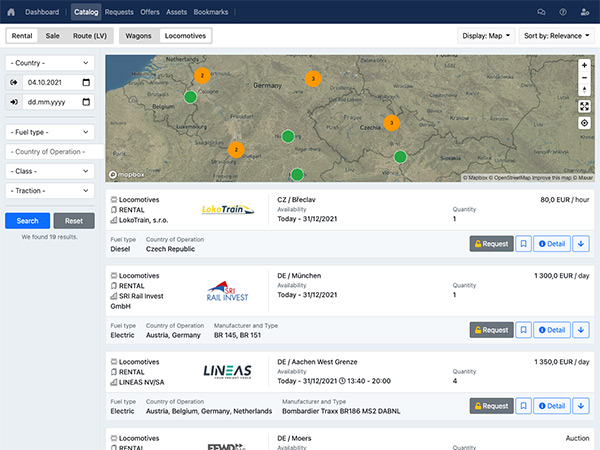As RAILMARKET.com reported in July (read more), several studies have already been carried out in Germany over the summer to investigate the impact of the introduction of a 9-euro ticket for passengers. The German Aerospace Centre’s (DLR) Institute for Transport Research has now come up with a new study.
DLR focused mainly on the question of how the €9 ticket has influenced mobility behaviour. For this purpose, DLR surveyed around 2,500 people between the end of June and mid-July 2022. The study is part of the large project "Mobility in times of crisis”, where the same people are surveyed at different times to measure the pandemic-related changes in behaviour and, in the meantime, the influences of the 9-euro ticket as well as the reduction in fuel prices in the summer of 2022.
“The 9-euro ticket shows that mobility behaviour can be changed with a simple and clearly understandable offer, low prices, and the extended nationwide regional transport. At least in the summer months, the trend caused by the pandemic to increase car use has been stopped. For this change to continue longer-term and to include more everyday journeys in addition to leisure time, we need to have good and equally simple public transport services in the future,” commented Professor Meike Jipp, Director of the DLR Institute for Transport Research in Berlin.
Thanks to the high media presence, 98 % of the respondents knew about the 9-euro ticket. Around 20 % had a season ticket for public transport at the time of the survey, 28 % had a 9-euro ticket and another 4 % were planning to buy one. Around half thus owned a season ticket during the survey period and used public transport at a flat rate. The number of season tickets owned had thus more than doubled about one month after the introduction of the 9-euro ticket. Respondents were more likely to use the ticket in the future when they had already used it in the past.
While regular season tickets are disproportionately used by young, highly educated people working or studying full-time, users of the 9-euro ticket more closely reflected the average population in terms of age, education, occupation, and gender. The situation is different for the place of residence: Users of the 9-euro ticket are more likely to live in big cities. Those who did not want to buy a 9-euro ticket at the time of the campaign are very often from smaller towns and villages.
The ticket was most used for leisure travel, with 60% of respondents using it for excursions and leisure activities at the weekend, 34% for leisure travel during the week, and 21% for holiday travel. Tickets played a lesser role in commuting: 18% used them to travel to work or for training.
The group of those not interested in the 9-euro ticket is united by the fact that they did not use public transport before the pandemic and in the six months before the campaign began. “A certain amount of previous experience with public transport is an important factor. Frequent and even sporadic use of public transport encourages the purchase of a 9-euro ticket. For people who never use public transport, however, the entry barrier is very high," explained Dr. Claudia Nobis, DLR project manager.
The 9-euro ticket has given a major boost to public transport and had a similarly strong impact on mobility behaviour as the Covid-19 pandemic but in the opposite direction. The important question is how people will use public transport after the end of the campaign. Only 9% of respondents with a 9-euro ticket expected to use public transport more often after the offer comes to an end. Another 38% expected their public transport use to remain the same, 40% wanted to travel less and 14% didn’t expect to keep using it at all.
“It shows that the more journeys a person has already made with the 9-euro ticket, the more they want to use public transport after the ticket ends. This suggests that the low-use users have specifically purchased the 9-euro ticket for certain journeys that will no longer be made or will be made by other means of transport after the campaign expires,” said Claudia Nobis.

